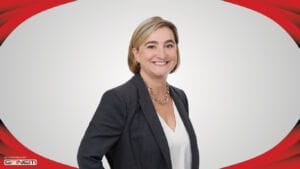Today, Rep. Greg Stanton urged House appropriators to consider funding critical water infrastructure projects in Arizona during a hearing before the House Appropriations Subcommittee on Energy and Water Development, and Related Agencies.
Stanton spoke to the unique challenges Arizona faces from climate change: extreme heat, prolonged drought, wildfires, and dangerous flash flooding. He outlined several infrastructure projects that need federal investment through the U.S. Army Corps of Engineers and the Bureau of Reclamation.
READ ALSO: 7 facts to know about Arizona’s proactive approach to water management
“We know the kind of infrastructure we need to adapt to these changes, but it requires federal investment. I’ve worked with community leaders—from small, rural, and tribal communities, as well as our major metro areas—to identify Arizona’s highest priority projects to help us prepare for the challenges ahead. These projects address our environmental infrastructure needs, flood control and protection, and water supply preservation,” Stanton testified.
In his testimony, Stanton advocated for necessary investments in Arizona water infrastructure, pushing the Committee to:
• Provide $4 million for the Arizona Environmental Infrastructure program (Section 595). The 2020 Water Resources Development Act included Stanton’s legislation to expand the existing Section 595 environmental infrastructure program to include the state of Arizona. The program will provide critical assistance to communities and tribal nations across the state to address their aging water and wastewater systems. Earlier this year, the first project, a water line for the Pascua Yaqui Tribe, was funded under this authority and more than 15 communities across the state have submitted letters of intent to the Corps of Engineers to participate in this program.
• Direct the Corps of Engineers to begin feasibility studies for the Cave Buttes Dam and the Agua Fria River Trilby Wash to investigate flood risk management needs as well as potential improvements to improve the safety of the two dams in order to strengthen flood risk protection for the region. The Cave Buttes Dam in Maricopa County provides flood protection for more than a million residents within unincorporated parts of the county as well as the cities of Phoenix, Glendale, Peoria, Tolleson, and Avondale in an area with $15 billion in residential and commercial property. Floodwater seepage in the dam has sounded the alarm for us to reduce the dam’s risk of failure.
Similarly, thousands of residents and hundreds of critical facilities, including Luke Air Force Base and Interstate 10 depend on the Agua Fria River Trilby Wash, or McMicken Dam, a 9.5-mile long earthen embankment, constructed in 1955 by the Corps of Engineers, for flood protection. But because of dam safety deficiencies, land subsidence, earth fissuring, urbanization and non-compliance with current dam safety standards, the dam’s ability to maintain its current level of protection is questionable at best.
• Direct the Corps of Engineers to expedite a post authorization change report needed to continue construction of the Tres Rios ecosystem restoration project along the Salt and Gila river corridors in Phoenix. The Tres Rios Wetlands are a part of Rio Reimagined, an ongoing green infrastructure project along the Rio Salado spearheaded by the late Sen. John McCain and Rep. Ed Pastor. The project is designed to provide flood control protection and the use of treated effluent from a regional wastewater treatment facility to restore hydrological connectivity and sustain fish and wildlife habitat.
• Authorize construction of a flood control project for the Little Colorado River, consisting of new and reconstructed levees to protect the community of Winslow and other parts of Navajo County. The current levee system is at risk of overtopping or failing in a 100-year flood event, leaving approximately 2,700 properties and 1,600 structures, including almost all of the community’s critical public facilities—hospitals, schools, nursing homes and utilities—vulnerable. This important project significantly reduces the threat to the community and surrounding areas.
• Provide the Bureau of Reclamation with the resources it needs to fulfill its commitment under the Drought Contingency Plan to create or conserve 100,000 acre-feet per year or more of water in the Colorado River system to contribute to the conservation of water in Lake Mead. The Colorado River is the lifeblood of the Lower Basin States, providing water that is vital for drinking water in major urban areas including Phoenix and Tucson as well as a significant resource for tribes, agriculture, and industry. Historic dry conditions combined with the current prolonged drought and future effects of climate change will likely continue to contribute to significant economic, environmental, and other impacts throughout the basin.
• Fund a Bureau of Reclamation sediment mitigation study in the Verde River basin. Rising temperatures and higher variability of rainfall on the Verde River watershed make the carryover storage available in Verde River reservoirs critical to successful climate change adaptation in water management. Putting to work a long-term, viable solution to address the accumulation of sediment in the system will ensure effective management of central Arizona’s water supplies for more than two million residents.
Rep. Stanton’s full testimony as submitted to the Subcommittee are available HERE.
Video of his testimony is available HERE.




